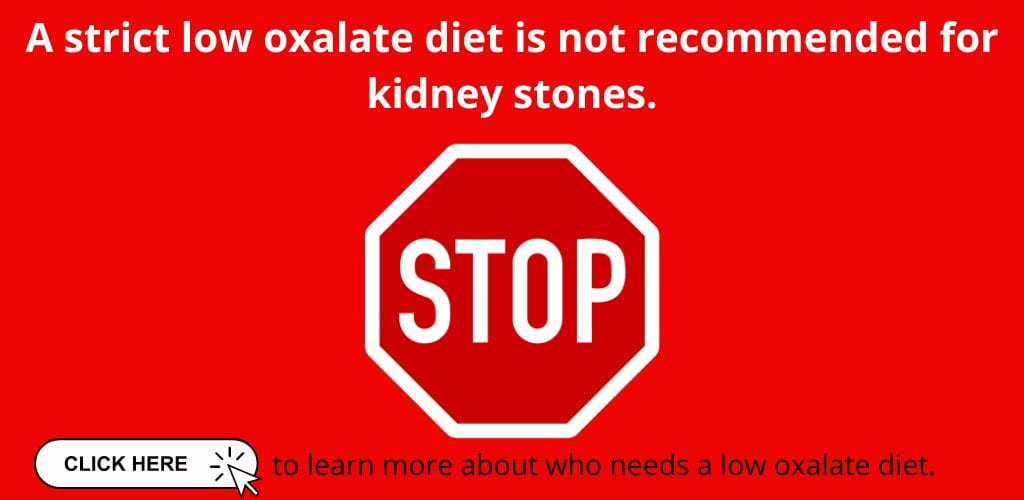
Table of Contents
Who Should Eat Low Oxalate Bread?
As always, I start my low oxalate posts with a disclaimer. Not everyone who has kidney stones needs a low oxalate diet. In fact, not even everyone with oxalate kidney stones needs low oxalate bread.
A healthy diet for kidney stone prevention must be individualized to your urine risk factors and medical history. And, a diet for calcium oxalate kidney stones is a lot more than oxalate!
Always work with a Registered Dietitian or doctor familiar with your medical history to learn what is best for you.
Can I Eat Bread with Kidney Stones?
Absolutely! In fact, bread and other healthy carbs are an important part of a healthy diet for most people.
Unfortunately, bread and other carbohydrates are often demonized. But, healthy whole grains are an important part of nearly any healthy diet. Whole grains are an important source of fiber, vitamins, minerals and energy!
The keys to healthfully eating bread and other carbohydrates are to:
- Make sure you get most of your carbohydrate from healthy, whole food sources with fiber (such as whole grains and fruit!)
- Eat them as part of a well balanced plate that includes protein and vegetables
Kidney Stone Friendly Bread: More Than Low Oxalate
Kidney stone prevention is about a WHOLE lot more than oxalate – even for people who need a low oxalate diet.
Whole grains, such as whole grain bread, are recommended for a general healthy diet because whole grains are higher in fiber and other healthy nutrients than white or refined grains.
Even though whole grains are a bit higher in oxalate, I recommend whole grains for the vast majority of patients with calcium oxalate kidney stones.
To understand why, let’s dive into the anatomy of whole grains.
What Is a Whole Grain?
Whole grains are any grain (such as wheat, rye, rice or barley) that includes ALL parts of the kernel. Whole grains include the endosperm, germ and bran. During processing of refined grains, the germ and bran are removed, leaving just the endosperm.
The germ and bran have nearly all of the healthy fiber, vitamins and minerals in them! They also have most of the oxalate.
Even though refined grains such as white bread, white pasta and white rice are lower oxalate, they are also lower in these important nutrients. Because of this, they are not recommended for most people with kidney stones.
For most people, the benefit of all that extra fiber and other nutrition outweigh the slightly higher oxalate content of whole grains.
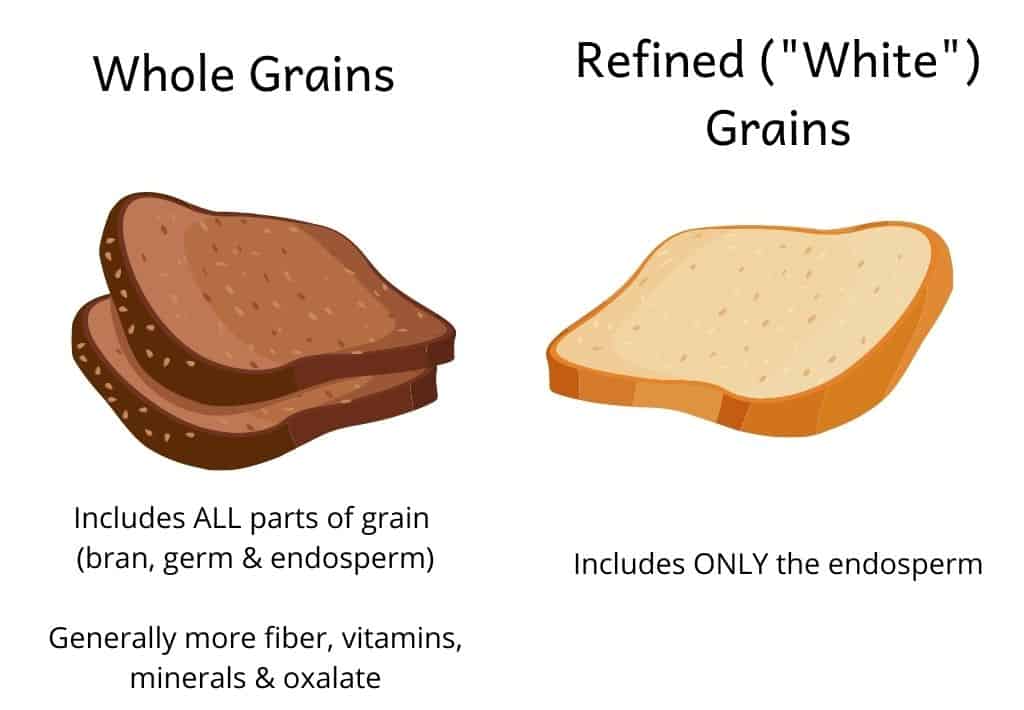
Benefits of Whole Grains for Kidney Stones
Fiber
Perhaps most importantly, whole grains are a better source of fiber than refined grains. Diets adequate in fiber help combat much more than constipation. High fiber diets can help prevent cancer, aging, cardiovascular disease, diabetes and most other chronic conditions. (1)
Most people eat much less fiber than they should. The average fiber intake in the United States is 15 grams per day. (2) This is far below the goal of 25-38 grams per day. (2)
Along with fruits and vegetables, whole grains are an important source of fiber in our diet.
Magnesium
It is well known that magnesium plays an important role in kidney stone prevention. Magnesium inhibits kidney stone formation. (3) And, lower blood levels of magnesium are associated with kidney stones – even when magnesium levels are in the “normal” range. (4)
Whole grains, nuts and seeds are the primary source of magnesium in our diet. (5) Nearly half of Americans are not eating enough magnesium. (5) Completely avoiding whole grains (or, nuts and seeds!) because of the oxalate content also removes magnesium.
Importantly, magnesium supplements have not shown consistent benefit for stone prevention. (6) Try to get enough magnesium through healthy foods.
Phytate
Phytate (or phytic acid), is compound found in many plant foods. It is known for being an “anti-nutrient” because it blocks the absorption of some important nutrients such as calcium, magnesium and zinc.
However, phytate has many health benefits! It is an antioxidant and likely plays a role in stopping kidney stones from forming. (7) (8) (9)
Phytate is found in many healthy plant foods, such as whole grains, nuts, seeds and legumes.
Importantly, the exact role of dietary phytate in kidney stone prevention is still up for debate, but it is clear there some connection. (10) In general, diets higher in phytate are associated with lower risk of kidney stones. Avoiding whole grains reduces phytate in your diet.
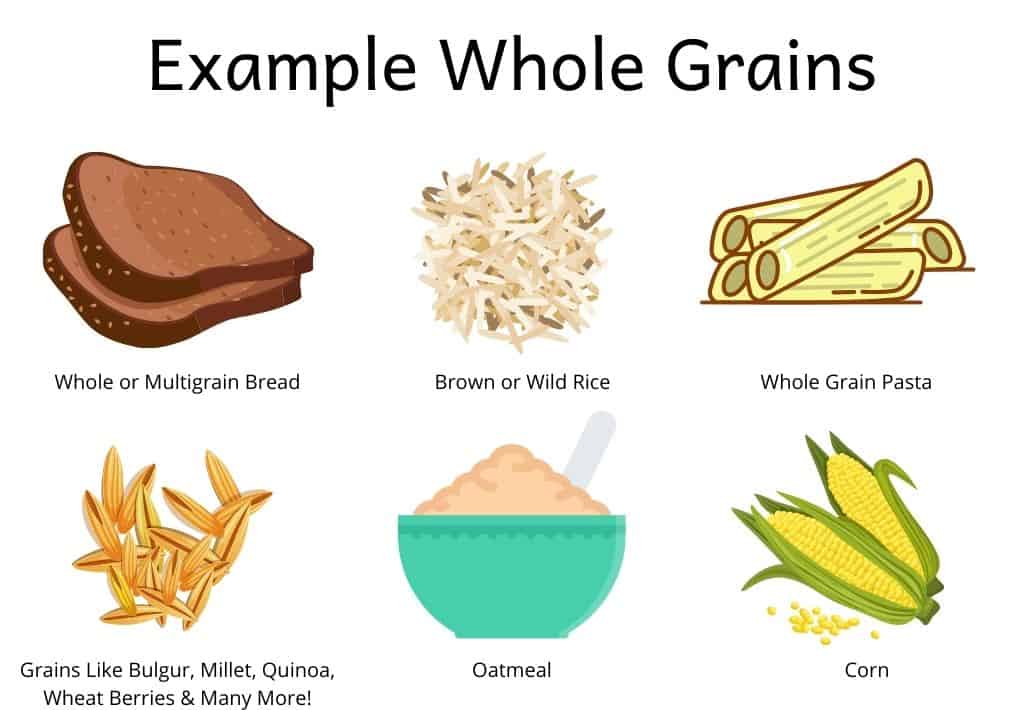
Tips for Finding Low Oxalate Bread Good for Kidney Stones
It is nearly impossible to know exactly how much oxalate is in commercial breads. Unless we have the exact recipe (which, most companies would not be willing to share, for obvious reasons!), it is impossible to calculate exact oxalate counts.
But, you can do your homework and try to find a healthy bread lower in oxalate – while balancing the need for fiber and good nutrition!
Tip 1: Hunt for High Oxalate Ingredients
Look at the ingredients in whatever bread you are eating – this is the first step to finding low oxalate bread. If the bread contains lots of very high oxalate ingredients, that bread will likely be high in oxalate!
It is unlikely that you’ll find a healthy bread that is completely free of very high oxalate ingredients – unless you choose highly refined white bread – which isn’t ideal.
Instead, look for a bread that has fewer very high oxalate ingredients.
Remember, ingredients are listed on food labels in order of how much is used. So, ingredients listed first are more important. And, ingredients listed further down are less important.
Very High Oxalate Bread Ingredients
To find low oxalate bread, look for bread that doesn’t have these ingredients, or has them further down the ingredient list.
- Almond Flour
- Soy Flour
- Brown Rice Flour
- Rice Bran
- Cornmeal, Corn Flour & Corn Bran
- Teff Flour
- Amaranth Flour
- Sorghum Flour
- Millet
- Quinoa
- Buckwheat
- Bulgur
- Wheat Berries
- Soybeans
- Sesame Seeds
Lower Oxalate Bread Ingredients
Look for bread made from these ingredients.
- Whole Wheat Flour
- White Flour
- Wheat or Wheat Flour
- White Rice Flour
- Bread Flour
- Coconut Flour
- Chickpea Flour
- Tapioca Flour
- Cassava Flour
- Arrowroot Flour
- Oats or Oat Bran
- Barley
- Lentils
- Sunflower, flax seeds or other lower oxalate nuts & seeds
Tip 2: Check For Fiber
Bread, and other carbohydrates, are an important source of fiber – if done right! Make sure whatever bread you choose is a good source of fiber.
A good rule of thumb is to look for bread that has at least 3 grams of fiber per slice.
Tip 3: Don’t Forget to Check Sodium
Keeping sodium in check is an important part of kidney stone prevention. Bread can be surprisingly high in sodium.
Always check the Nutrition Facts label to see how much sodium is in your bread. Both the general recommendations for healthy people, and people with kidney stones, suggest limiting sodium to no more than 2,300mg per day. (11)
Tip 4: Avoid Added Sugar
Sugar is another sneaky bread ingredient. Most breads have some sugar or sweetener, like honey or molasses, because yeast needs sugar to make bread rise. But, some breads have more sugar than others.
Look for bread with no more than 4 grams of added sugar per slice.
Top 5 Healthy Low Oxalate Bread Recommendations
Brownberry Oatnut Bread*
My personal favorite go-to for healthy bread. This low oxalate bread is made primarily from whole wheat flour, wheat flour and oats. Most other ingredients are lower in oxalate such as hazelnuts, walnuts and sunflower seeds.
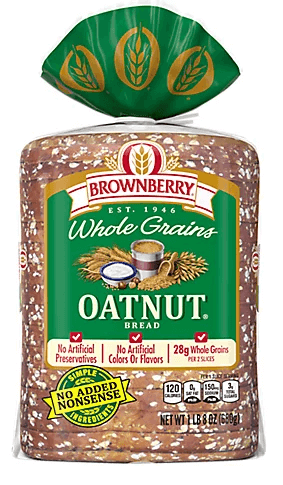
Brownberry Whole Grains Double Fiber Bread
This fiber packed bread has 5 grams of fiber per slice! Most of the fiber is from lower oxalate ingredients such as whole wheat flour, oat fiber and wheat bran.
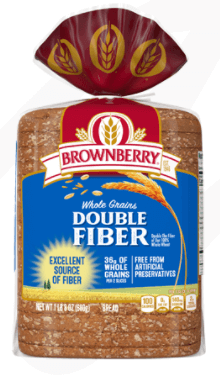
Pepperidge Farm 100% Whole Wheat Bread*
This low oxalate bread is made of just whole wheat flour and wheat flour. Likely one of the lowest oxalate bread options in my top 5!
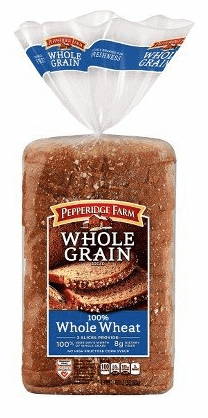
Pepperidge Farm Whole Wheat Honey Wheat Bread*
Made from whole wheat flour, this tasty bread had just a touch of honey for a bit of sweetness! Even with the added sugar, this bread only has 4g of added sugar per slice.
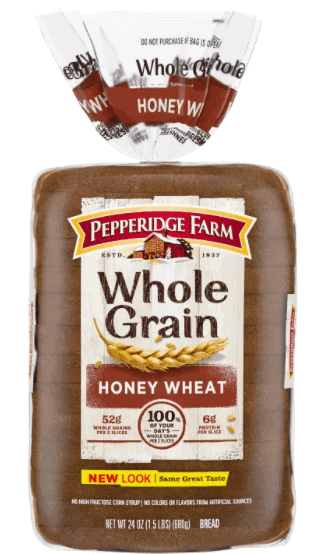
Sara Lee 100% Whole Wheat Bread*
Again made from essentially only whole wheat flour, this bread is a healthy low oxalate bread choice. This is also the lowest in sodium, with only 115mg of sodium per slice.
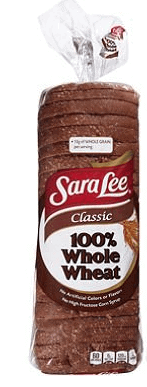
Low Oxalate Bread Recipe
Of course, you can always make your own low oxalate bread at home! Make your own bread at home to control the ingredients – especially that salt and sugar! Plus, what tastes (and smells!) better than homemade bread!?
Try this simple whole wheat bread recipe!
(Healthy!) Low Oxalate Bread
Ingredients
- 1 cup water warm
- 2 tablespoons sugar
- 1 packet active dry yeast
- 1 1/2 cup whole wheat flour
- 1/2 teaspoon salt
- 2 tablespoons vegetable oil
- 1 1/2 cup white flour
- 2 tablespoons oatmeal
- 2 tablespoons sunflower seeds
Instructions
- In a large bowl, combine water, sugar, yeast and 1 cup whole wheat flour. Let rest for a few minutes, until bubbles start to form. Add remaining 1/2 cup whole wheat flour, salt and oil.
- Add 1 cup white flour. Mix with a spatula. Pour dough onto floured surface and sprinkle remaining 1/2 cup white flour, oatmeal and sunflower seeds over dough. Knead for 5 minutes, until all the flour, oatmeal & seeds are incorporated and the dough is elastic.
- Rinse large bowl and spray with cooking spray. Place dough in the bowl and cover with a damp towel or plastic wrap. Set bowl in a warm place and let dough rise until doubled in size, about 1 1/2 hours.
- Spray a loaf pan with cooking spray. Punch dough to deflate and shape into a 8-9" log. and place dough into pan. Cover with damp towel or plastic wrap and let rise another 30 minutes. Meanwhile, preheat oven to 375'F.
- Uncover the bread and bake about 30 minutes, until golden brown. To make sure bread is cooked, remove from loaf pan, and gently tap on bottom – the loaf should sound hollow.
- Slice and enjoy!
Notes
Happy Eating!
Melanie

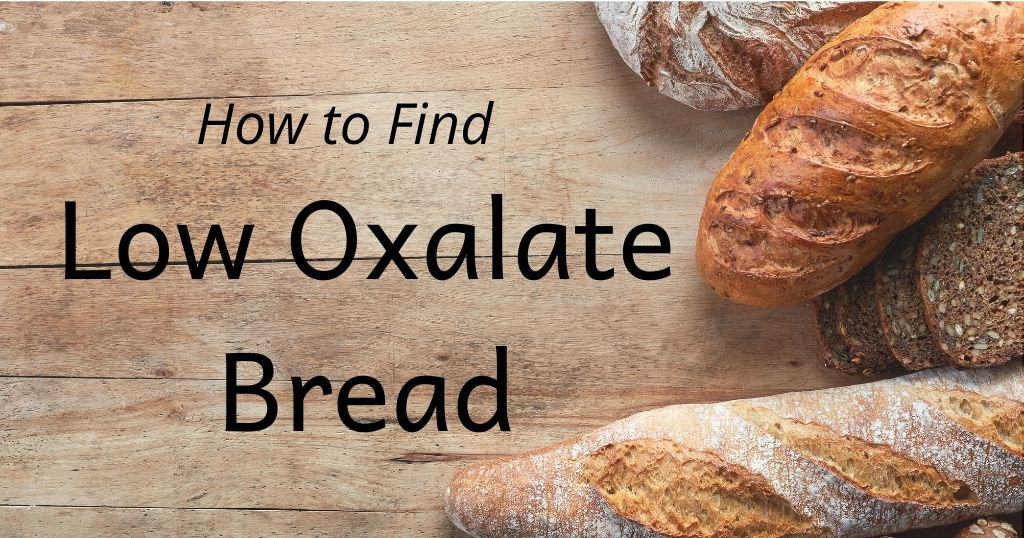
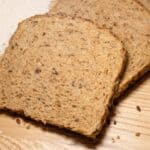
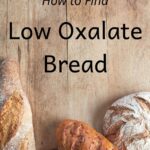
What about pumpernickel bread? It is all rye flour.
As any grain, whole grain rye will be higher in oxalate vs. refined rye. However, I’d still recommend whole grain rye as it will be higher in fiber, magnesium and other healthful compounds for most people.
Is there a low oxalate naan bread?
You’d go about the same process investigating the ingredients for naan as “regular” bread in this article. Please see this article about who really needs to be on a low oxalate diet (hint: most people with kidney stones DO NOT!)
kindly post a list of low oxalate foods for diabetics – for patients who have had kidney stones episodes & who have diabetes
Hello! Both diabetes and kidney stone nutrition really isn’t about following a “list” of foods. It is going to be about learning how to build healthy meals and meal patterns specific to your situation. This post might help get you started and learn more!
Kidney stones but also mild diabetes makes this recipe problematic due to the high carbs. I need to aim for no more than 10 or 12 carbs per slice. I will have to see if I can work on it.
Healthy eating for blood sugar management is all about healthy eating patterns – typically focused on adequate protein and fiber with meals – not just total carb amount. Healthy eating for stones and diabetes is actually very much the same! This post might help!
Thank you for this article! Very helpful. I am confused about oxalate content of whole wheat flour. It is said that whole wheat flour is good, but to stay away from wheat berries. What about whole wheat flour ground from wheat berries? I used to make my bread by grinding red and white into flour. Is this high oxalate because the flour came from wheat berries without sifting out the bran and germ? Thank you so much for your help.
I’d REALLY try to move away from this “this food is “good”” and “this food is “bad”” mentality when it comes to oxalate (or nutrition in general, for that matter!). I actually recommend ALL whole grains for MOST people with stones because they have more fiber, vitamins and minerals in them. Yes, they have more oxalate, but this really isn’t a big deal for most people. I believe you just signed up for Kidney Stone Nutrition School (yay!) – and you’ll learn a TON more about all of this!
I did, thank you. I’m so glad I don’t have to give up bread!
I make my own bread. I’ve always dusted the dough with cornmeal to keep the dough from sticking to the towel covering it. Do you think the amount that ends up on each slice could be a problem?
Also, I cover the top of the dough with sesame seeds because i love the taste. I’ve heard that sesame seeds without the hull are fairly low in oxalate. Still a concern?
Hi Peter! I really wouldn’t worry about dusting with cornmeal. My guess is the sesame seeds also aren’t a big deal either (I also love the flavor and texture they add!) – but I’d have to look at your 24 hour urine test and know more about your meal patterns to answer for sure!
I find Dave’s Killer Bread to be readily available and appears to be beneficial, I opt for their powerseed.
Thanks for sharing!
More information about cornbread please! I love it!
Working on a low sodium cornbread post TODAY!
Hi Melanie, I love cornbread – did you perfect & share your recipe or am I jumping the gun? Eagerly awaiting your masterpiece!
Also, FYI: I have been eating Oroweat 21 grain & seeds thin sliced bread. is the Brownberry Oat bread superior to this? I am also trying to lose weight, so am balancing need to eat 1650ish calories a day with need to stay satiated and not get recurrence of kidney stones.
Hi Steve! YES! I did recently post my low sodium cornbread. You can find it here!
Orowheat is actually the same brand as Brownberry! And no – honestly they are probably about the same and don’t have appreciable differences in oxalate. As always, I like to give the warning that many people with stones do not need to limit oxalate – chances are there are MUCH more important things to pay attention to!
Hope that helps!
Is bread made from sprouted grains lower or higher in oxalate?
Sprouted grains tend to have less oxalate. Here is a study!
I would be interested in reading this study but am not able to open it without a login, do you have another way to access this study? Thank you, Fran
You can shoot us an email ([email protected]) and mention which study you want to read. If I have it as a PDF, we can send it to you!
Is sourdough bread prepared and baked with bread flour lower in oxalate than store bought bread?
Technically yes. Sourdough bread is slightly lower in oxalate than others. However, this difference really isn’t significant!
Duh! You can cut the oxalate content of any sandwich by having it open face using one slice of bread instead of two.
This would reduce the oxalate content! It would also reduce the fiber and carbohydrate content – depending on what people need!
Have you found any guide for oxalate levels in ancient grains; especially for Einkorn? It is the most ancient of the wheat family and super nutritious. Einkorn.com has good nutritional information.
I grind my own flour from grain, and eat it daily, but worry if high oxalate.
Your article is helpful.
Interested in this as well…
Finding accurate oxalate content for all of these different grains is truly impossible. They likely are higher in oxalate, but I still recommend them for most stone formers due to all of their beneficial components. Plus, I HIGHLY advise against actually COUNTING oxalate because it is virtually impossible to do (period) – and truly impossible to do accurately.
I know Ezekiel Low sodium is high in fiber and 0 i sodium content. But what about oxalates? It’s all whole grain.
Although whole grains do tend to be higher in oxalate, I recommend them for a majority of stone formers for many reasons outlined in this article. Oxalate is usually the least of my concerns for oxalate stone formers, and many do not even need to limit oxalate.
Laura,
FYI, I wrote to the company that makes Exekiel bread, asking them about oxalate content and here is their response:
“Thank you for contacting Food For Life® Baking Company. We do not have oxalate amounts for all our products. The only sprouted product that was tested was our Ezekiel 4:9 Sprouted Whole Grain Bread, which is relevant to most Ezekiel 4:9 products. The amount of oxalate per serving is 0.006g. Please let me know if you have any questions.”
-jim
Interesting! Thanks for sharing. This oxalate content simply MUST be inaccurate given the ingredients. It has to be higher than that. Oxalate is apparently very tricky to measure – leading to a lot of the misinformation out there about it.
Any thoughts on einkorn flour?
Hi Brian! I don’t have a reputable estimate for oxalate in einkorn flour.
Thank you & the very helpful Emily, for the tips, advice, & links.
Sooooo many ways to be confused… I was looking for an answer re: 1 product, being hi or lo oxalate…but the link Emily sent actually gave a well rounded explanation w/ examples re: oxalates in general; as relates mostly to bread. Very helpful . thx again.
i’m just on the bandwagon for reducing oxalate in my diet. But I’m diabetic south. Here are a few things that are tried and true and I know affect my blood sugar in a certain way. Can I still eat Aunt Millie’s Live Carb Smart wheat bread?
Hi Lara – The amount of oxalate that is right is different for everyone. This article about who needs a low oxalate diet might be helpful!
What about sourdough bread? I know if baked with a starter it has probiotic qualities and wondered if that helps. Thanks
I don’t know of any research that has found a lower oxalate content of sourdough bread. But it could, potentially!
Is a sprouted whole grain bread like Angelic Bakehouse no salt added high in oxaltes? I’m looking for a lower oxalate, low salt bread, organic also, is possible.
Thanks for any ideas!
As always, I recommend checking out the ingredients like and using this post to help you compare brands. ALL whole grain breads are going to be fairly high in oxalate – but I still recommend the vast majority of kidney stone formers make them because the benefits of eating whole grains over white grains MASSIVELY outweighs the bit of oxalate in them.
Hi
What about French banquet, Italian crusty bread that you could dip in olive oil?
Thank you
Ada
That would be similar to plain old white bread. You’d just look at the ingredients and compare them to these lists here to get some sense of the oxalate content.
P.S – Truly, what is better than crusty baguette dipped in olive oil!? Not much in my book!
Hi:
I have a gluten intolerance and a sensitivity to wheat and oats. I read online that gluten free breads are high in oxalates. Can you tell me if they are? It has been very challenging trying to find some type of bread that I can eat. Can you give me any suggestions? Thank you.
Hi Joyce! The oxalate content really depends on which ingredients they use for the gluten free bread. Many are made with almond flour, which would make them pretty high. Use this post as a guide to check the ingredients on whatever gluten free breads you like to get some sense of the oxalate content.
Hi – what about potato flour? I know a white potato with skin is moderately high in oxalate, but without the skin it’s less so. Where does white potato flower sit on the oxalate spectrum of flours? – John
It would likely be on the higher side.